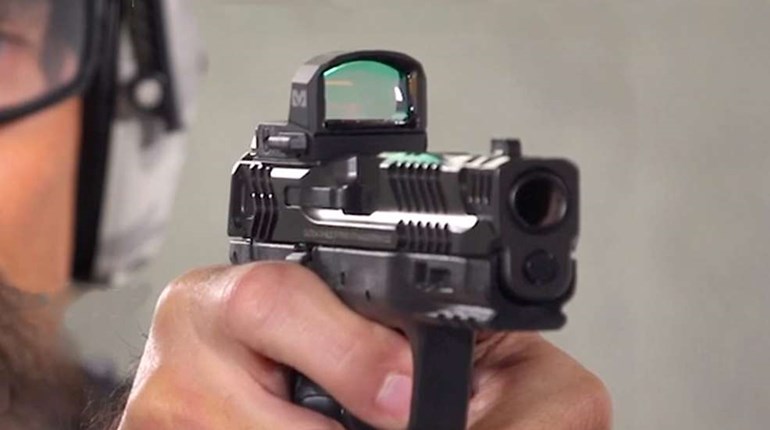
That little gizmo, usually found on the left side of most auto pistols, is quite often misunderstood. Some folks continue to use it as a device to release the slide and allow it to return to battery, but that is simply not a good idea for the defensive shooter. Here are a few reasons why.
Using the slide stop to release the slide does not make full use of the spring that will drive the slide forward. Once in a while, the slide will fail to pick up a fresh round from the magazine, or it may not completely seat the new round in the chamber. In addition, using the slide stop as a release tends to accelerate the wear on the various parts involved.
Manipulating the external surface of the slide stop requires fine motor skills, and the use of fine motor skills are to be avoided by the defensive shooter whenever possible. Performing fine motor skills under the kind of pressure that one finds in a gunfight will often lead to fumbling, and fumbling slows down your response at a time when your response must be as quick and accurate as possible. In addition, should a person have to defend himself with a pistol other than his own, it quickly becomes apparent that slide stops are in different locations—depending upon the actual pistol used—and of various sizes, all of which leads to more fumbling.
Our pistol may come to slide lock because we have simply run out of ammo, or it may do so while we are clearing a malfunction. The most effective way to get the pistol back into battery is to grasp the slide on the top, just in front of the rear sight, using all of the fingers of the support hand (making sure that you don't run your support hand in front of the muzzle). The slide is grasped firmly and racked to the rear with a good deal of force before releasing it to allow it to pick up a fresh round and return to battery. Forget the slide stop, just rack the slide back with plenty of force. This will work with any pistol with which one has to fight and avoids the time wasted while looking for the various external controls.
Target shooters and casual plinkers have many methods of operating their pistols. However, the defensive shooter should not try to base his defensive plans on such techniques. The defensive shooter needs to find techniques that work under tremendous stress and require the use of as few fine motor skills as possible. It is not that other methods are wrong, it's just that this method is better.




































